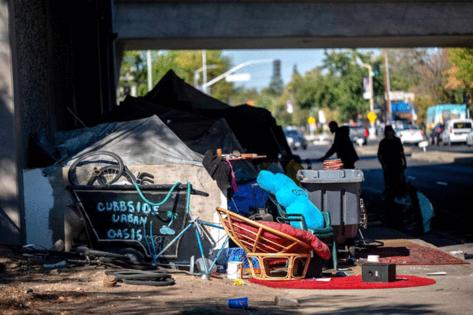Sacramento County to redirect funding toward homelessness reduction efforts
Published in News & Features
SACRAMENTO, Calif. — Funding for Sacramento County efforts to prevent homelessness needs to be redirected, as reported Tuesday to the Board of Supervisors by the county’s Behavioral Health Services director.
This follows new guidance from the state Department of Health Care Services, which requires the county to implement new initiatives under the Community Assistance, Recovery and Empowerment Act, including CARE Court.
“We’re also being asked to focus on people with the most significant behavioral health needs, and so we are no longer going to have a funding bucket for prevention,” said Ryan Quist, the county’s behavioral health services director. “Prevention activities are going to be the responsibility of the state under their prevention initiative.”
More than 6,000 people are homeless in Sacramento County, according to the most recent Point in Time Count from 2024. This report found that more than 2,000 are classified as having a serious mental illness.
The Behavioral Health Department is required to fund early intervention and must allocate its funds toward three new categories, Quist said. Thirty percent must be directed to housing, 50% to initiatives for chronic homeless residents (with an emphasis on those living in encampments), and the remaining 25% be spread out for “everything else,” including capital development projects.
Prevention funds, which are advised to no longer be under the county’s purview, previously funded initiatives like anti-homeless stigma campaigns, Quist added. Supervisor Phil Serna called this change “bizarre,” saying anti-stigma campaigns have been a hallmark for the county.
“That seems like it’s the most obvious breakthrough you can have with someone,” Serna said. “Getting them finally to a place where they’re not afraid to come out from the shadow of this perception that they’ll be criticized and stigmatized for.”
In response to Serna’s concerns, the deputy county executive for social services, Chevon Kothari, said the county could find money for initiatives elsewhere, but that the board must be “really cautious.”
These funds come to the Behavioral Health Department from Proposition 1, which replaced the Behavioral Services Act, which used monies collected from a 1% tax on residents’ income, according to the California Department of Health Care Services. This fund was more than $1 million per year in total, according to behavioral health’s presentation.
Prop. 1, which passed in 2024, approved a $6.4 billion bond for behavioral treatment programs, the California Department of Health Care Services stated. In total, the county’s estimated 2026-2027 budget for its housing interventions will be more than $31 million.
CARE Court
Since CARE Court launched in December 2024, 57 petitions have been filed with the court and 12 clients have been accepted into the program. So far, the county has seen challenges, including providing housing to support a CARE Court resident’s needs, low staffing, safety for investigation teams, and locating homeless individuals, according to the Behavioral Health Services’ report.
CARE Court’s focus is on adults with a schizophrenia spectrum diagnosis or other psychotic disorders that interfere with “primary activities of daily living and an inability to maintain functioning,” according to the report.
Residents enter CARE Court after a petitioner seeks court-ordered treatment and services, including housing for an individual. A petitioner must be 18 or older and fit a specific category of relation to a potential CARE Court respondent, like a sibling or a parent, Quist explained.
When asked why the CARE Court specifically focuses on those with schizophrenia, Quist said he was unsure and that the direction came “directly from the governor himself and his office.” He also clarified some “misconceptions” about CARE Court and explained the program is for those who are “not already stabilized in involuntary treatment.”
“The court process does not compel individuals to participate in treatment, nor are the support able to compel individuals to take medications,” Quist said. “What the court actually does is a court order for the county to provide the needed services.”
____
©2025 The Sacramento Bee. Visit at sacbee.com. Distributed by Tribune Content Agency, LLC.







Comments